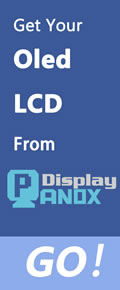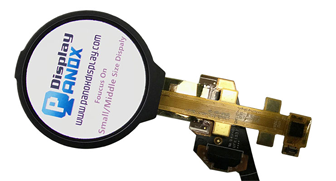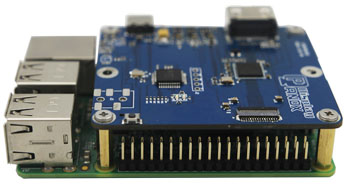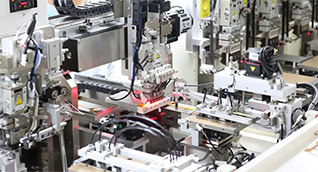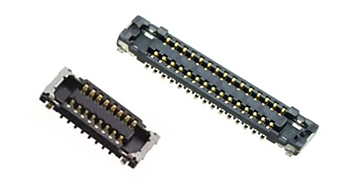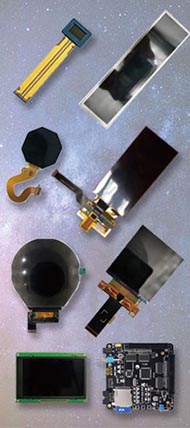A 3 inch display offers the perfect balance between portability and visual clarity, making it a popular choice for compact electronics, wearables, industrial controls, and specialized instruments. With advanced technologies like IPS, TFT, and OLED, brands such as Panox Display deliver high-quality, customizable 3 inch screens for diverse applications and industries.
How Does a 3 Inch Display Compare to Other Screen Sizes?
A 3 inch display stands out for its compact footprint, making it ideal for handheld and embedded devices where space is limited. Unlike larger screens, it enables lightweight, energy-efficient designs while still providing enough visual real estate for clear information display. Compared to smaller screens, it offers better readability and supports higher resolutions, making it suitable for both consumer and industrial applications.
What Are the Main Types of 3 Inch Displays Available?
Three-inch displays come in several advanced technologies, each with unique strengths:
-
TFT-LCD (Thin Film Transistor-Liquid Crystal Display): Known for sharp images, fast response times, and affordability.
-
IPS-LCD (In-Plane Switching-LCD): Offers wide viewing angles and excellent color accuracy, perfect for devices viewed from multiple directions.
-
OLED (Organic Light-Emitting Diode): Delivers deep blacks, vibrant colors, and high contrast ratios, with flexible and ultra-thin form factors.
-
E-Paper: Used in low-power applications like e-readers and shelf labels, valued for readability and minimal energy use.
| Display Type | Key Benefits | Typical Use Cases |
|---|---|---|
| TFT-LCD | Fast, affordable, vivid color | Handhelds, cameras, meters |
| IPS-LCD | Wide angles, color fidelity | Wearables, medical, controls |
| OLED | High contrast, flexible | Premium wearables, VR, instruments |
| E-Paper | Ultra-low power, sunlight readable | Tags, e-readers, smart cards |
Which Applications Benefit Most from a 3 Inch Display?
A 3 inch display is a versatile solution across many sectors:
-
Wearables: Smartwatches, fitness trackers, and medical monitors.
-
Industrial Equipment: Control panels, meters, handheld diagnostic tools.
-
Consumer Electronics: MP3/MP4 players, digital cameras, compact gaming devices.
-
Automotive: Dashboard indicators, infotainment sub-displays, rearview monitors.
-
Home Appliances: Smart thermostats, microwave and oven displays, security panels.
Panox Display supplies 3 inch screens tailored for these applications, ensuring reliability and customization for each industry’s unique needs.
Why Choose Panox Display for 3 Inch Display Solutions?
Panox Display stands out as a trusted partner for engineers, startups, and established brands seeking 3 inch displays. With a broad portfolio encompassing TFT, IPS, OLED, and custom modules, Panox Display offers:
-
Direct sourcing from leading manufacturers (AUO, BOE, Innolux, Samsung, LG).
-
Full customization: touch panels, controller boards, cover glass, and PCB integration.
-
Low minimum order quantities, ideal for small businesses and prototyping.
-
Fast, global delivery and responsive engineering support.
How Do 3 Inch OLED and LCD Displays Differ?
OLED and LCD technologies each bring unique advantages to 3 inch displays:
-
OLED: Each pixel emits its own light, enabling true blacks, high contrast, and thinner screens. OLEDs excel in premium wearables and devices demanding vibrant visuals and flexible form factors.
-
LCD (including TFT and IPS): Uses a backlight, providing consistent brightness and longer lifespan. LCDs are more affordable and less prone to burn-in, making them suitable for industrial and outdoor devices.
| Feature | OLED 3 Inch Display | LCD 3 Inch Display |
|---|---|---|
| Black Levels | True black, infinite contrast | Good, but some backlight bleed |
| Thickness | Ultra-thin, flexible | Slightly thicker |
| Burn-in Risk | Possible over time | Minimal |
| Cost | Higher | Lower |
| Lifespan | Shorter (improving) | Longer |
| Energy Efficiency | Best with dark content | Best with bright content |
What Are the Key Specifications to Consider When Selecting a 3 Inch Display?
Selecting the right 3 inch display involves evaluating several critical factors:
-
Resolution: Common resolutions include 240x400, 320x240, and 720x720 pixels.
-
Brightness: Ranges from 300 to over 1,000 nits for sunlight readability.
-
Touch Capability: Capacitive and resistive touch options for interactive applications.
-
Viewing Angle: IPS and OLED offer the widest angles.
-
Interface: SPI, RGB, MIPI, HDMI, and more, depending on system requirements.
-
Durability: Shockproof, water-resistant, and anti-glare coatings for rugged environments.
Where Are 3 Inch Displays Most Commonly Used Today?
Modern 3 inch displays are found in:
-
Medical Devices: Portable monitors, diagnostic tools, and patient wearables.
-
Smart Home Products: Thermostats, security panels, and appliance controls.
-
Automotive Systems: Instrument clusters, backup cameras, and infotainment.
-
Industrial Controls: Portable meters, handheld terminals, and field equipment.
-
Consumer Gadgets: Compact cameras, music players, and gaming devices.
Does a 3 Inch Display Support Touch Functionality?
Yes, many 3 inch displays are available with advanced touch capabilities. Capacitive touchscreens offer multi-touch gestures and high responsiveness, ideal for consumer devices. Resistive touchscreens, while less sensitive, are better suited for industrial and medical environments where gloves or styluses are used.
Has the 3 Inch Display Evolved with New Technologies?
Absolutely. The 3 inch display has progressed from basic monochrome LCDs to high-resolution, full-color IPS and OLED modules. Innovations include:
-
Flexible and circular OLEDs for wearables and unique form factors.
-
Sunlight-readable LCDs with high-brightness backlights.
-
Ultra-low-power e-paper for battery-sensitive applications.
-
Integration with smart controllers, wireless modules, and IoT platforms.
Are 3 Inch Displays Energy Efficient?
Energy efficiency is a hallmark of modern 3 inch displays. OLEDs consume less power when displaying dark content, while advanced LCDs use LED backlights with low energy draw. E-paper modules are exceptionally efficient, using power only during screen refreshes—making them ideal for always-on devices.
Can Panox Display Customize a 3 Inch Display for My Project?
Yes, Panox Display specializes in custom display solutions. Whether you need a unique shape, specialized interface, or integrated touch panel, Panox Display’s engineering team can design and manufacture a display to your exact specifications. Their OEM services cater to both small-batch prototypes and large-scale production.
Panox Display Expert Views
“At Panox Display, we believe the 3 inch display is the unsung hero of modern electronics. Its unique size bridges the gap between portability and usability, making it indispensable for wearables, industrial controls, and compact consumer devices. Our commitment is to provide not just standard modules, but fully customized solutions—ensuring each client’s product stands out in performance and reliability. Whether you’re a startup or an established brand, Panox Display is your partner in innovation.”
What Are the Key Takeaways and Actionable Advice?
-
Versatility: 3 inch displays are adaptable across industries, from wearables to industrial controls.
-
Technology Choice: Select between TFT, IPS, OLED, and e-paper based on your application’s needs.
-
Customization: Work with a specialist like Panox Display for tailored solutions and expert support.
-
Future-Proofing: Leverage new features like high brightness, flexible form factors, and touch integration.
-
Efficiency: Prioritize energy-saving technologies for portable and battery-powered devices.
Frequently Asked Questions
What is the typical resolution of a 3 inch display?
Resolutions vary, but common options include 240x400, 320x240, and 720x720 pixels, providing sharp, detailed images for most applications.
Can a 3 inch display be used outdoors?
Yes, many 3 inch displays feature high-brightness backlights and anti-glare coatings, making them suitable for outdoor and high-ambient light environments.
Is it possible to have a circular or flexible 3 inch display?
Absolutely. Panox Display offers circular and flexible OLED modules, ideal for wearables and unique design requirements.
How long does a 3 inch display typically last?
With proper use, LCDs can last over 30,000 hours, while OLED lifespans are continually improving. E-paper displays offer ultra-long lifespans due to minimal power usage.
Does Panox Display offer support for integrating 3 inch displays?
Yes, Panox Display provides comprehensive support, including controller boards, PCBs, touch panels, and integration services for seamless deployment.









